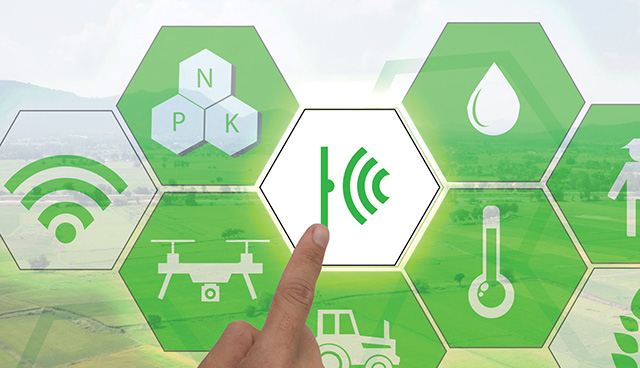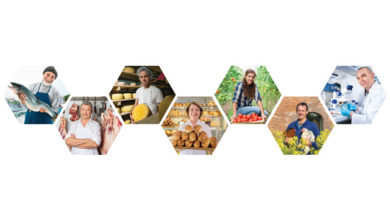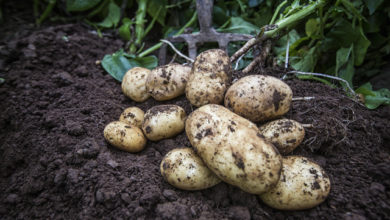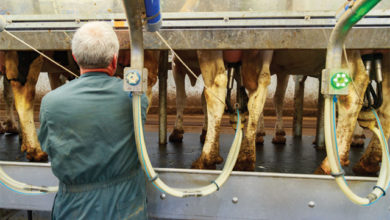From farm to fork: Safety matters

 Arthur Cox provide an overview of the health and safety and related duties that apply to those working in the agri-food sector and highlight some of the hazards and risks that may be encountered.
Arthur Cox provide an overview of the health and safety and related duties that apply to those working in the agri-food sector and highlight some of the hazards and risks that may be encountered.
Wherever you sit in the supply chain for the food industry, the core duties contained in the Safety, Health and Welfare at Work Act 2005 (the “2005 Act”) and relevant subsidiary regulations will apply to you and your workplace and the activities which your business is involved in. The general and specific duties imposed on “employers” by the 2005 Act and subsidiary regulations apply equally to those working in dairy food production in a high-tech clean facility, say, as to the farmer with a 200-cow herd supplying milk to that same dairy facility. From farm to fork, while the statutory duties are the same, their practical application to the hazards and risks you encounter in your workplace may be very different.
Farming and agriculture
Farming and agriculture activities give rise to a disproportionate percentage of the fatal and serious accidents that occur every year. Last year, of the 47 workplace fatalities, 24 were in the farming sector, a statistic which has been described as “appalling”, 14 of those 24 were men over 65, also reflecting the particular characteristics of the working population in the agriculture sector. There are serious hazards associated with the handling of cows and other livestock, working with farm machinery and vehicles, dealing with slurry and slurry storage, the risk of drowning (both in water and slurry), not to mention the more familiar hazards associated with maintaining and repairing farm buildings and the risks of working at height, or alongside electricity pylons. The demographics of the farming population also presents particular challenges to achieving compliance with the basic requirements of the 2005 Act and the principles of risk assessment and management: lone working is a regular aspect of farming, often in relatively isolated locations, with a high percentage of farmers and farm labourers working in this sector being over 65 years of age. Against this backdrop, very many farms are also family enterprises, where the significant number of children living on or near farms is also a very peculiar feature of the sector and presents particular challenges in terms of ensuring their health and safety.
Even a cursory review of the Health and Safety Authority’s (HSA) website will tell you that agriculture is a sector to which the HSA has given and continues to give particular attention. Achieving compliance is difficult for many for the reasons articulated above, but the sector is fraught with hazards – opening the website today, in early February, you will immediately find information about slurry spreading, with the warning “One lungful of slurry gas can kill”. The HSA published relatively recently a number of Codes of Practice, specifically aimed at the activities in the agricultural sector, with the focus on farms with three or fewer employees (which make up a significant proportion of those working in agriculture), as well as numerous guidance notes and information sheets, covering everything from the Safe Handling of Cattle on Farms to managing farm buildings. What is also striking about the information available on the HSA website is the number of information videos available, designed to appeal to the more elderly farming population.
Agri-food manufacturing sector
Moving into the agri-food manufacturing sector, the nature of the hazards encountered and the risks to be mitigated and managed change somewhat but are not unique, unlike the on the farm scenario. That said, there are a number of additional requirements which will apply to manufacturers in their role as employer and as occupier or owner, over and above the duties under the 2005 Act. These requirements arise because the duties of companies operating in the agri-food manufacturing sector go beyond the basic duties to their employees. Manufacturers must also consider the end users of their products, as well as third parties living and working in the vicinity of their operations.
A review of recent food and allergen alerts on the FSAI website demonstrates that there were 24 food alerts and 30 allergen alerts in 2017, with common issues being the presence of foreign objects (such as small pieces of plastic) in foodstuffs, or the presence (or risk thereof) of Listeria monocytogenes and salmonella. Some of the more serious product recalls in recent history involve the recall by French infant formula manufacturer Lactalis of some 12 million boxes of powdered formula from 83 countries due to the risk of salmonella contamination. These recalls are a timely reminder for those operating within the agri-food manufacturing industry to ensure that their systems, procedures, policies and controls work to mitigate these risks.
Many companies operating in the agri-food manufacturing sector require EPA licences for their operations. New obligations under the Environmental Impact Assessment Directive 2014 place an increased focus on human health and population as a factor to be included in an Environmental Impact Assessment Report (EIAR) and any Environmental Impact Assessment screening. This new focus is relevant to any holder of an EPA licence who needs to apply for a review of their licence as well as most if not all BAT Licence reviews instigated by the EPA.
Unhelpfully, there is no published guidance on what should be considered under the heading of ‘human health and population’ in an EIAR, but the Commission Guidance on Strategic Environmental Assessment gives us a pointer. It considers that “environmentally related health issues such as exposure to… air pollutants are obvious aspects to study”.
This is particularly relevant to any agri-food manufacturers whose operations involve or include air emissions including noise, odour, as well as particulates in the form of dust/residue.
Regardless of your place in the food chain, health and safety duties on those operating in the sector are key to ensure the safety of everyone involved – from farm, to fork.
Arthur Cox
Ten Earlsfort Terrace
Dublin 2
D02 T380
E: deborah.spence@arthurcox.com
E: niav.ohiggins@arthurcox.com
E: laura.rafferty@arthurcox.com







